Railway museum to shunt trains for Port rail line revival
The National Railway Museum says it may have to lose some rolling stock exhibits as it downsizes after losing land and tracks to a $51 million plan to return a passenger rail line to the heart of Port Adelaide.

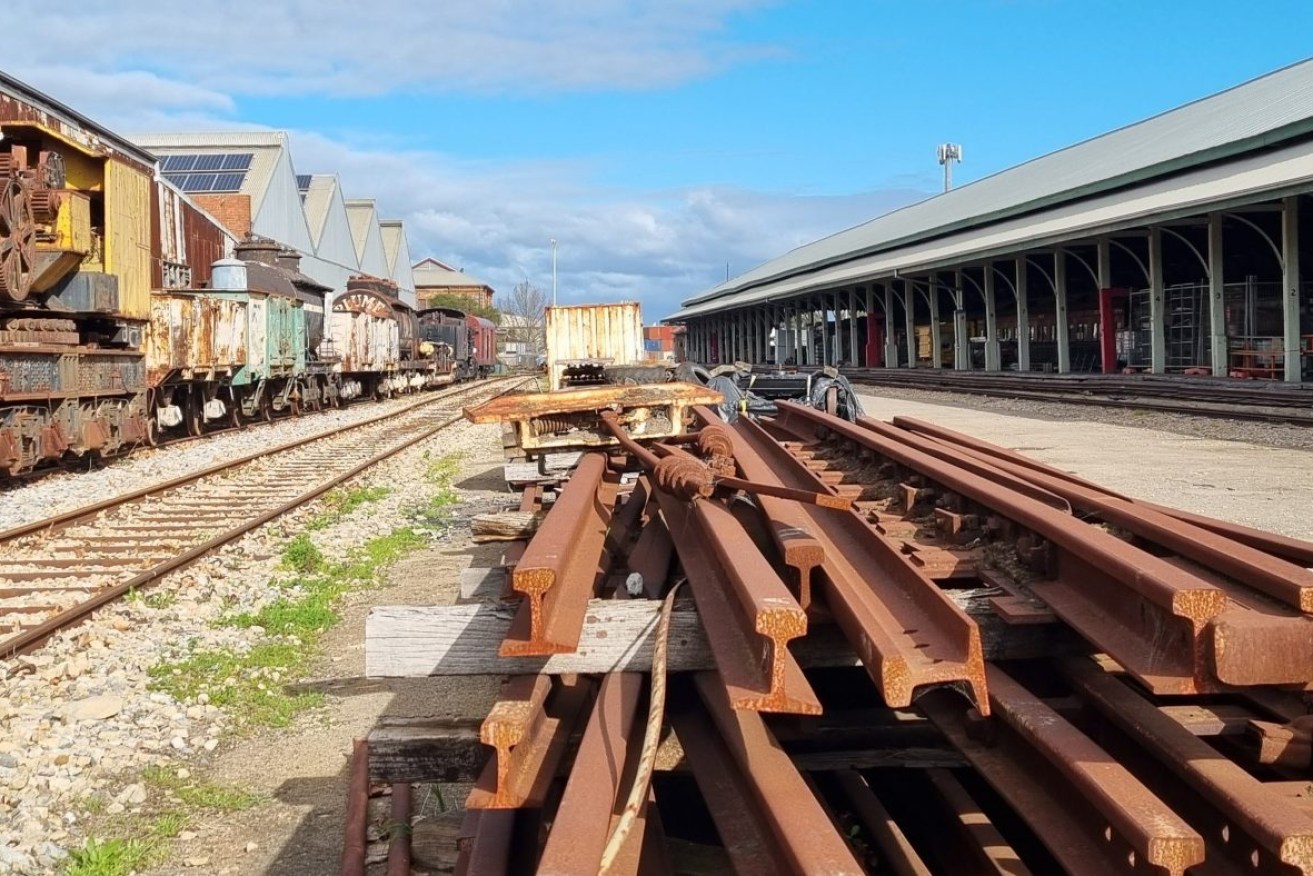
A view of the eastern side of the National Railway Museum and its state heritage listed goods shed (right). By 2024, Adelaide Metro trains will be operating along this spot every day. Photo: Thomas Kelsall/InDaily
Labor pledged before the state election to bring passenger trains back into the Port Adelaide city centre by rebuilding the mothballed Port Dock Railway, which runs off the existing Outer Harbor line and into the eastern side of the National Railway Museum.
The line has been closed since 1981. The Department says early works to revitalise the 1km railway will start later this year ahead of completion in 2024.
National Railway Museum executive officer Robert Sampson said he has raised a number of issues with the Department of Infrastructure and Transport about the project and there are “a lot of decisions to be made” about the museum’s future.
“It’s a bit scary,” he told InDaily.
Sampson said the project will see the museum lose around 300 metres of rail line it uses to store exhibits – forcing the relocation of 10 trains on the eastern side of the museum.
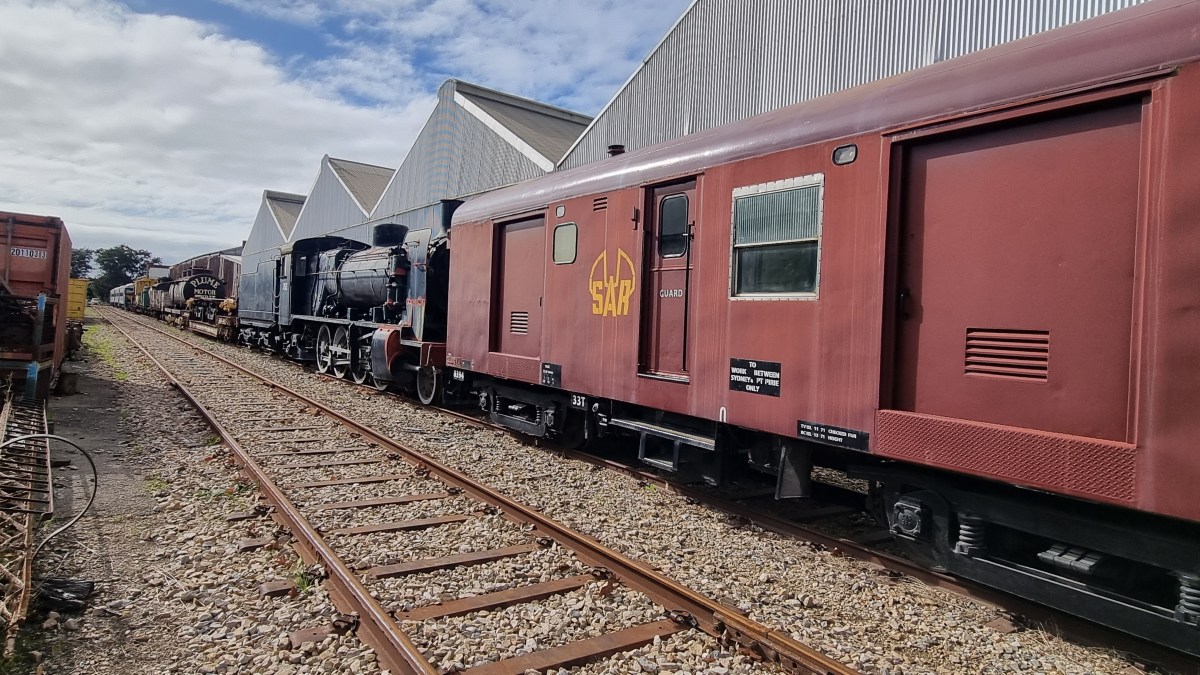
A view of all the rolling stock that will have to be relocated around the museum to make way for the Port Rail Spur, including The SAR Guards Van 8394 and Steam Locomotive 752 (ex Victorian Railways) dating from 1951. Photo: Thomas Kelsall/InDaily
It has also forced the museum to end its lease with the privately-owned Bluebird railcars of the Barossa Wine Train, which are currently located at Jacketts Station on the museum’s eastern boundary.
“What it means is that the museum itself will become quite congested indeed, let alone the loss of the land and the track,” he said.
“It means you’ve got to pack stuff in to where it isn’t normally packed in, which then makes any major event or rearranging things far more difficult.”
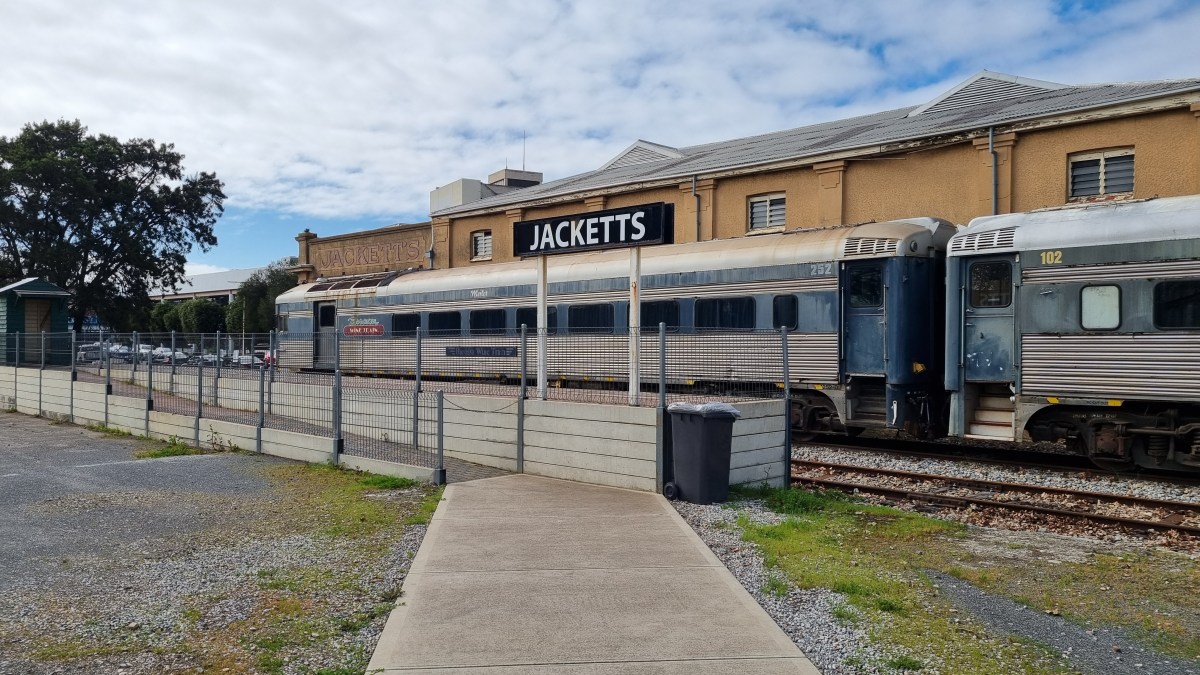
The Barossa Wine Train, seen here at Jacketts Station on the eastern side of the National Railway Museum, will soon be finding a new home. Photo: Thomas Kelsall/InDaily
Sampson said the museum last week measured how much space it has in its existing pavilions to accommodate the soon-to-be displaced rolling stock.
“It only just fits,” he said.
“There’s no easy solution to that one… because at the end of the day we’re still going to have a new train line and a fence on one side and no room on the western side [of the museum] to do anything.”
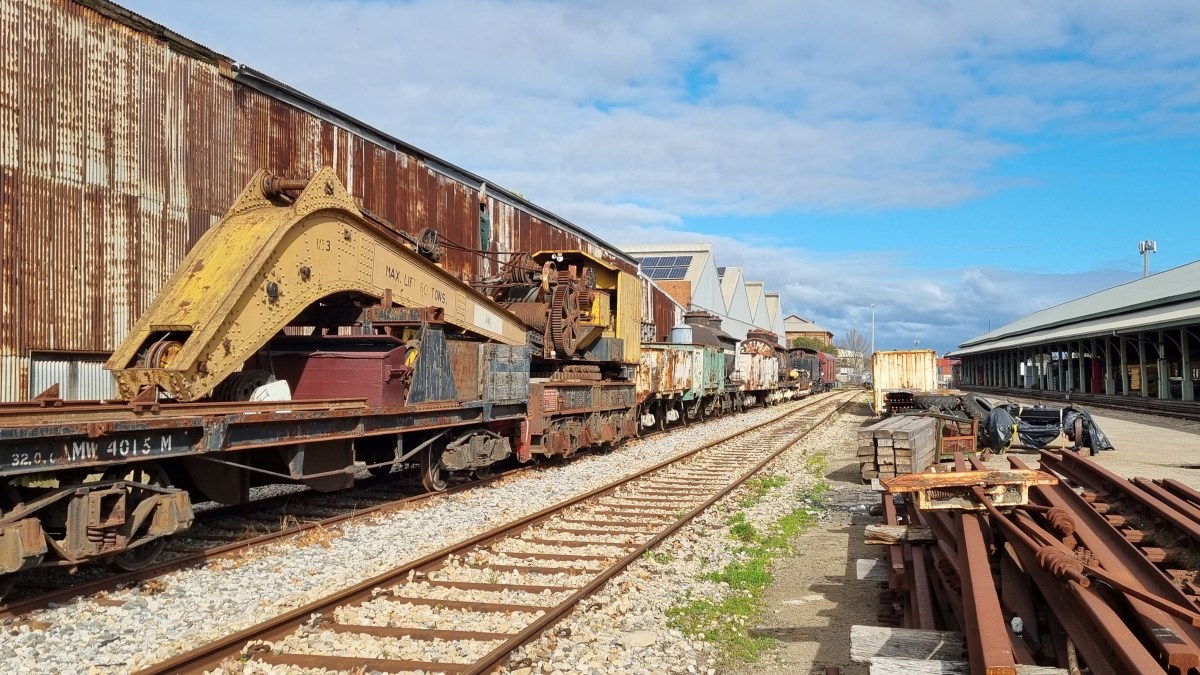
The museum’s 1925-built SAR accident crane will also soon make way for the Port Rail spur extension. Photo: Thomas Kelsall/InDaily
He said the museum may have to consider donating some of its freight wagons to maintain its capacity to move its trains around the pavilions.
“It’s not impossible that we may have to dispose of some freight wagons in the future,” Sampson said.
“There’s always going to be grief amongst some people regardless of what has to go, but at the end of the day it has to be what’s best for the long-term of the museum.”
The Malinauskas Government has budgeted $21 million this financial year and $30 million next financial year for the Port Rail Spur project.
The Weatherill Government first announced the project in 2017 and allocated it $16.4 million in funding, but the Marshall Government put it on ice in June 2019 after receiving advice it would cost $40 million.
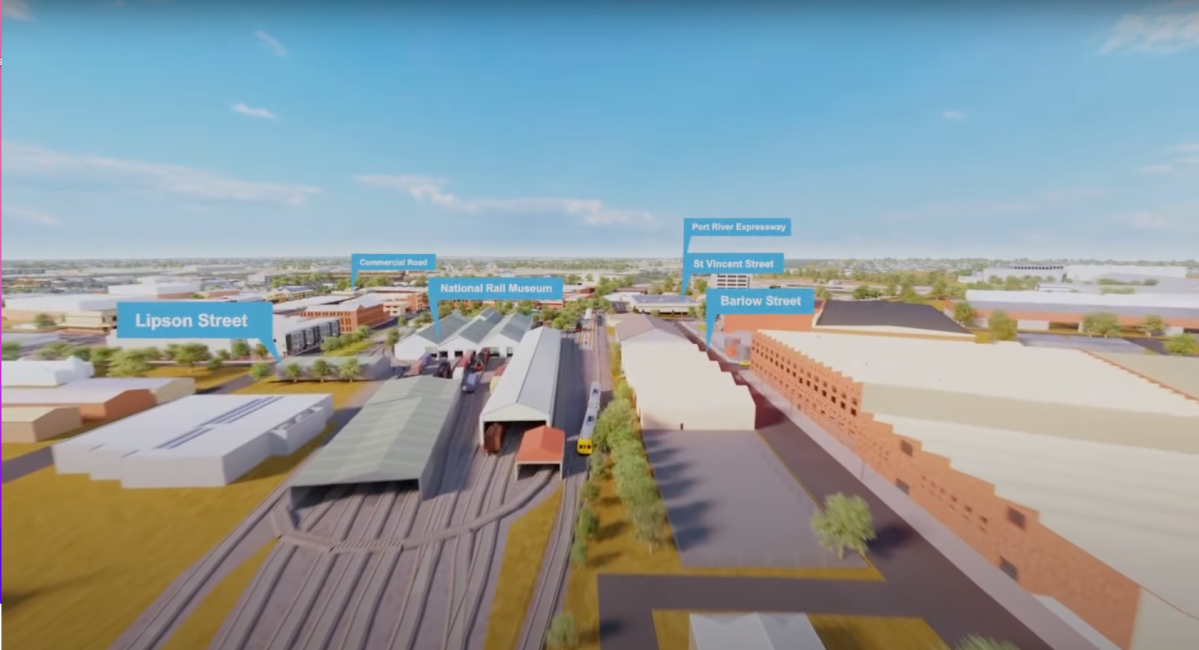
Plans released in 2017 showing the final stage of the Port Spur line entering the eastern side of the National Railway Museum. Image: Transport Department.
Detailed designs for the latest version of the rail extension are yet to be released, but the plans in 2017 envisaged the line terminating at Baker Street next to where the Pirate Life Brewery is now located.
To reach that point, the line will have to pass through a narrow space around 15 metres wide just before it runs alongside the museum’s state heritage listed goods shed.
The narrow space will also have to accommodate the museum’s heritage train line, miniature railway and a vehicle access point to ensure adequate fire safety for the wooden goods shed.
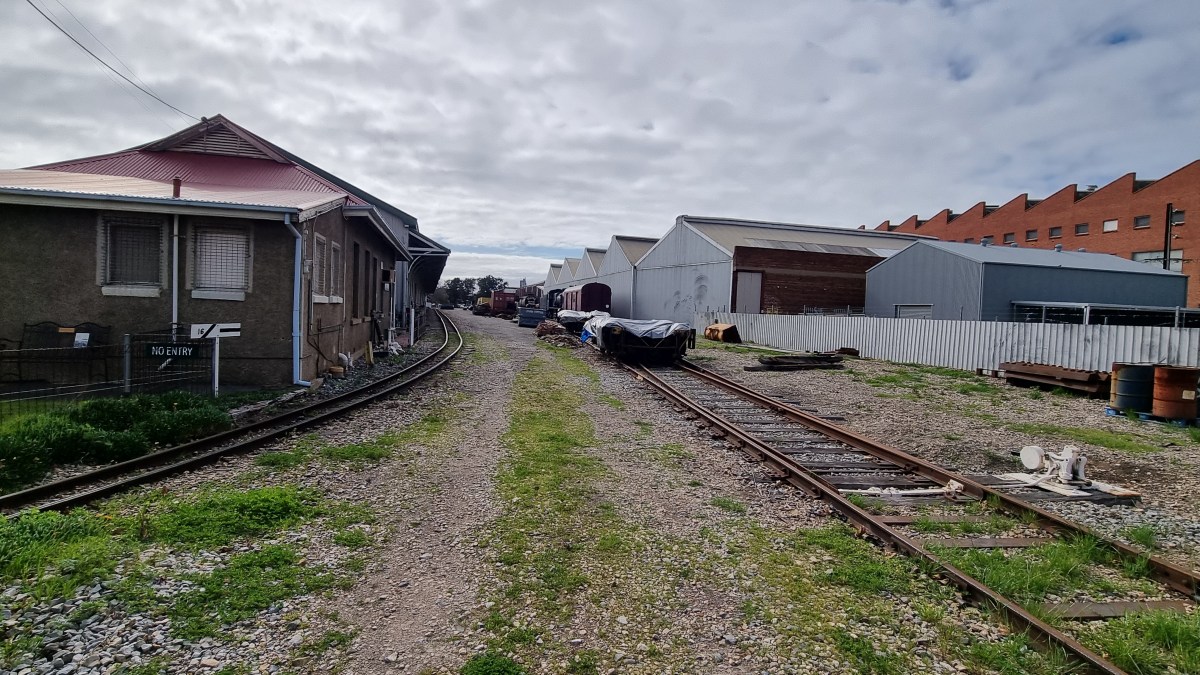
Tight squeeze: This narrow space is set to accommodate two train lines, a miniature railway and a road. Photo: Thomas Kelsall/InDaily
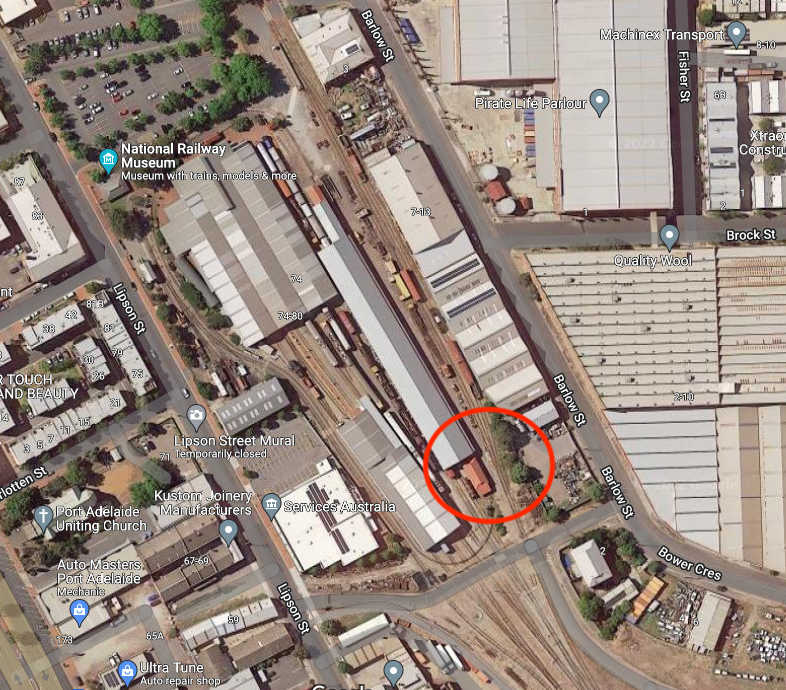
An aerial shot of the bottleneck. Image: Google Maps
Sampson said he was yet to see a solution to the problem for the “tight spot squeeze” but was “optimistic” the Department would find an engineering solution, such as a level crossing road.
“I don’t want to be totally negative about the project because we all know that if this was an active part of the Adelaide Metro network… people would use it to visit the Port’s attractions, Pirate Life Brewery and all sorts of developments,” he said.
“We would get some spin-off from that, no doubt about it.
“But it’s what happens to get to that situation because of the impacts on our site – that’s the real concern for us.”
The state government gave the National Railway Museum $60,000 in compensation for impacts to their site during the last aborted attempt to rebuild the Port Dock railway. Sampson said the museum would be applying for compensation again.
A Transport Department spokesperson said they are consulting with the museum on the project.
“The Department has been working closely with the National Railway Museum and will continue to do so throughout the life of the project,” a spokesperson said earlier this month.
“Engagement with key stakeholders is an important part of the project.”
The spokesperson also said the Department was working on developing timetables for the new Port Dock line.
“Planning has commenced to establish timetables for the new line, which will consider a range of factors, including the frequency of all train services and the overall capacity across the network,” the spokesperson said.
Port Adelaide/Enfield Mayor Claire Boan has previously said that she has received assurances from the Transport Department that the Port Adelaide extension will not impact the frequency of services on the Outer Harbor line.
The Transport Department has also indicated they are investigating how to decarbonise the new Port Dock Railway and the nearby Outer Harbor and Grange lines, with hydrogen and electric trains among the options.




